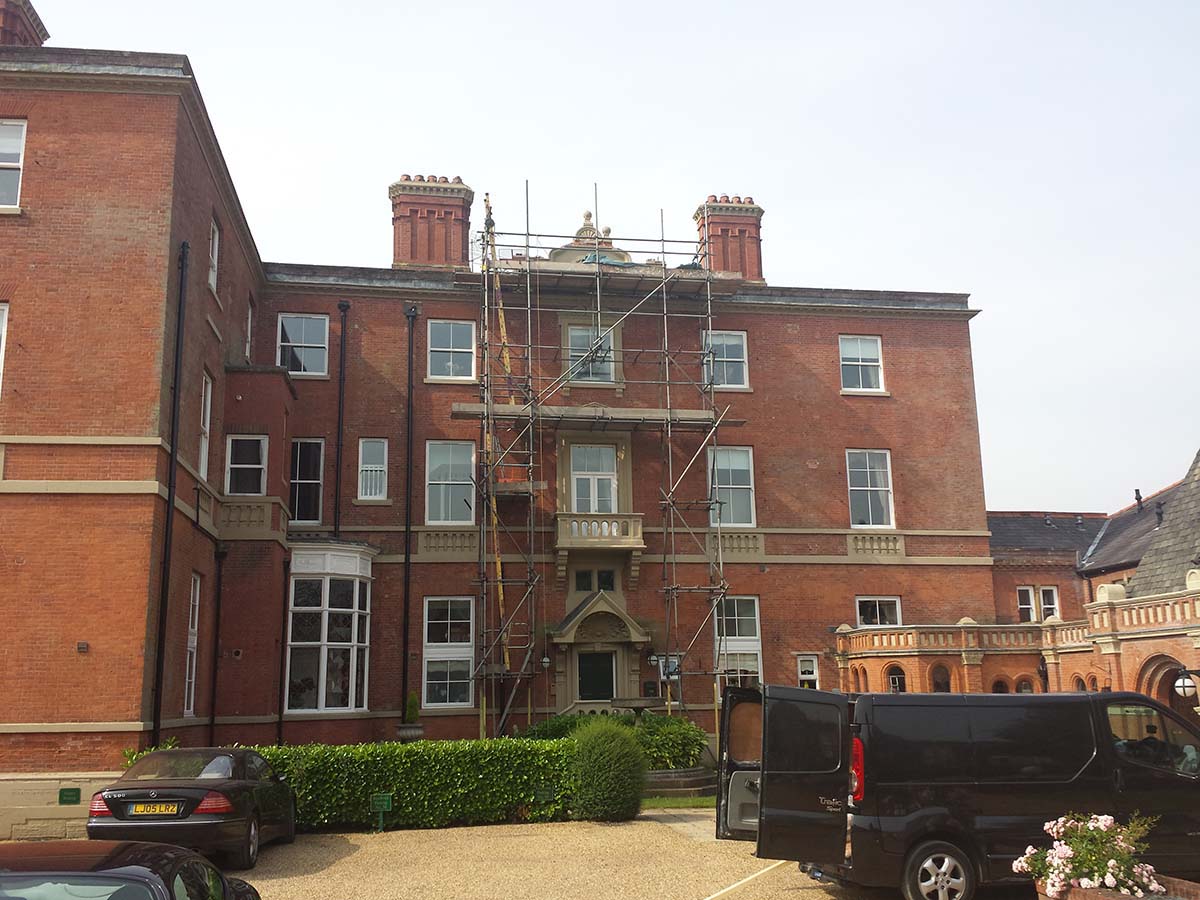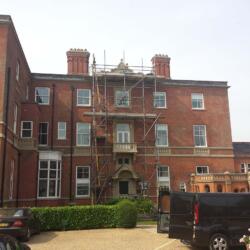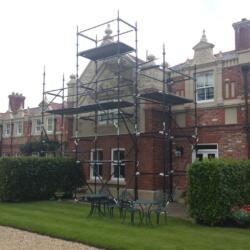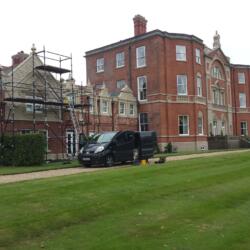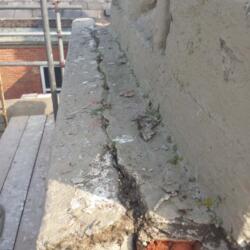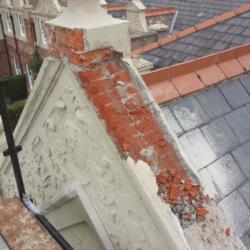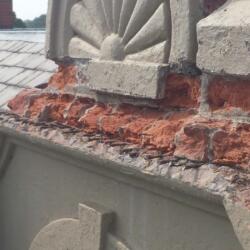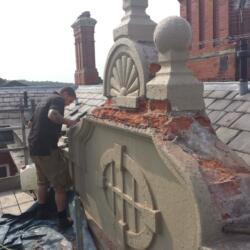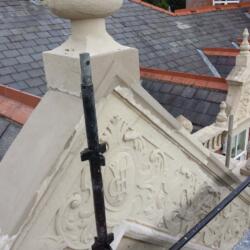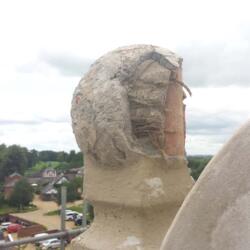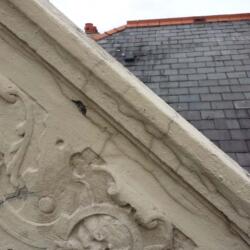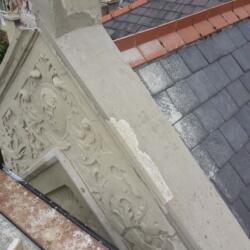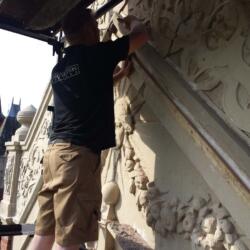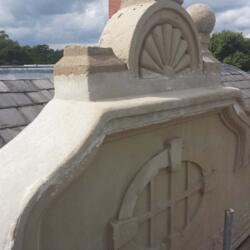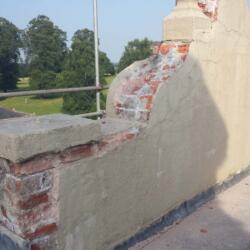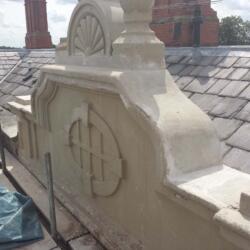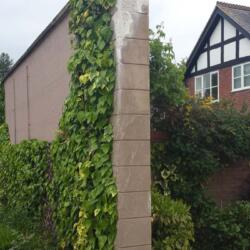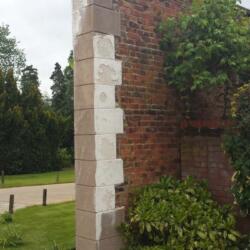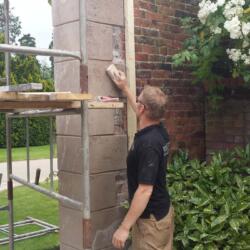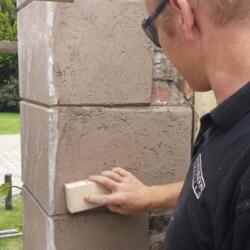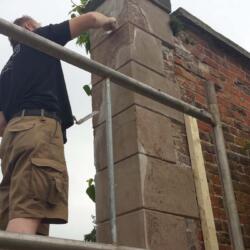On this project in Cheshire we were ask to undertake repairs to the Roman Cement Stucco to this Grade II* Listed Building Cheshire. We undertook a survey of the external render to the Listed Building to enable the scheduling of the works. As Restoration Contractors we were able to do all the works in house on the stucco external render

Once the stucco render had been gently chiseled away we discovered that the stucco had iron pins installed to the nosing. These steel pins were used to secure the stucco render to the main body of the structure. As this building is Grade 2 listed we had to use the appropriate materials when we restored the stucco render. Most buildings that are listed should be restored by professional restoration contractors. We hold a large skilled based of traditional restoration skills. The brickwork behind the stucco render had suffered due to the inappropriate materials used on the Grade II listed building. When the wrong cement based render is used on stucco render the stucco cannot expel moisture. With excess moisture in the background this will cause the brickwork degrade in the background.
We removed all the stucco render that had become detached from the sub-structure. For this task used small hand tools. If we were to used large hammer drill we would have more than likely damage more of the structure. We also removed any decayed or blown bricks. Our restoration contractors started to remove the damaged stucco render from the Grade 2 listed building in Cheshire. We managed to save a large amount of the stucco render. This Grade 2 building had been repaired in the past with the wrong materials this had caused damage to the original fabric.

Once we had carefully removed the de-bonded stucco render from the structure using small hand tools, our restoration contractors had to be extremely careful not to damage the stucco render. When all the damage stucco render was removed we discovered the steel iron pins located in the brickwork of the stucco render. These pins had been used to attach the nosing of the stucco render to the brickwork sub straight. These pins had corroded causing the stucco render to blow. The pins were located just 20mm below the surface of the stucco render. In total there was 35 iron pins in the nosing of the stucco render. The original brickwork had been constructed using lime mortar. We carefully removed the iron pins using a small drill to loosen the pins.
Bostock Hall is a country house to the northeast of Winsford, Cheshire, England. A former Georgian house, it was rebuilt in 1775 for Edward Tomkinson. It is thought that the architect was Samuel Wyatt. Alterations and additions were made to it in the middle of the 19th century and in 1875. The house is constructed in brick with ashlar dressings; it has a slate roof. It is in three storeys plus a basement. Its plan is L-shaped. The entrance front has a central bow window rising through all floors, and a single-storey porch with a balustraded parapet. The garden front has two bows, between which are a Venetian window with a Diocletian window above. The house is recorded in the National Heritage List for England as a designated Grade II* listed building. UK Restoration Services work on listed building throughout the UK. The stucco repair at Bostock Hall by our contractors is just one of many restoration projects we have undertaken.
